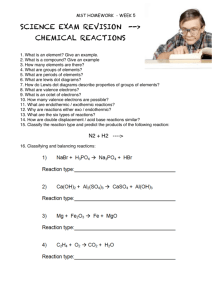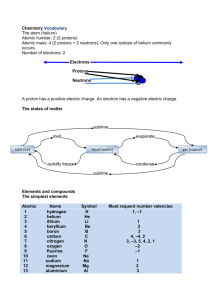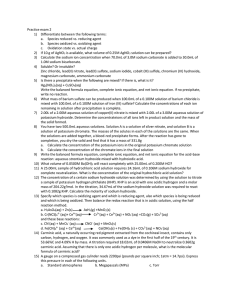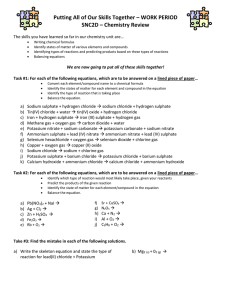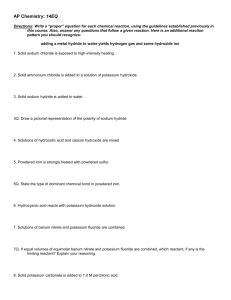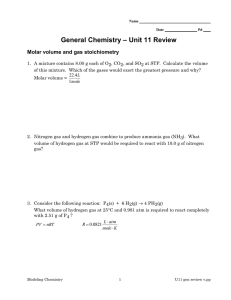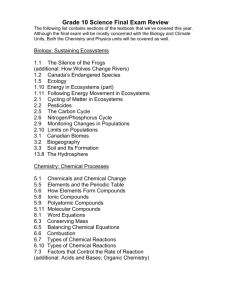Chemistry Equation Practice Worksheet
advertisement
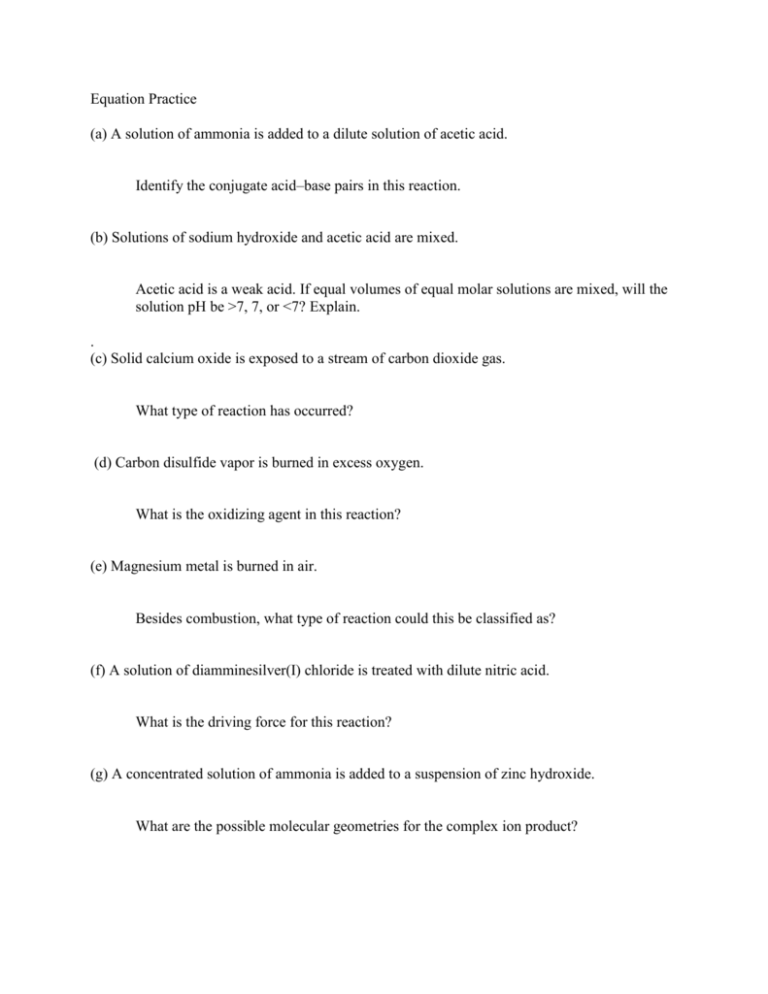
Equation Practice (a) A solution of ammonia is added to a dilute solution of acetic acid. Identify the conjugate acid–base pairs in this reaction. (b) Solutions of sodium hydroxide and acetic acid are mixed. Acetic acid is a weak acid. If equal volumes of equal molar solutions are mixed, will the solution pH be >7, 7, or <7? Explain. . (c) Solid calcium oxide is exposed to a stream of carbon dioxide gas. What type of reaction has occurred? (d) Carbon disulfide vapor is burned in excess oxygen. What is the oxidizing agent in this reaction? (e) Magnesium metal is burned in air. Besides combustion, what type of reaction could this be classified as? (f) A solution of diamminesilver(I) chloride is treated with dilute nitric acid. What is the driving force for this reaction? (g) A concentrated solution of ammonia is added to a suspension of zinc hydroxide. What are the possible molecular geometries for the complex ion product? (h) Solid ammonium carbonate is heated. Classify the type of reaction occurring. (i) A solution of hydrogen peroxide is catalytically decomposed. Name the element being reduced and the element being oxidized. (k) A solution of ammonium sulfate is added to a saturated solution of barium hydroxide. Identify any precipitate formed in the reaction. (l) A solution of copper(II) chloride is added to a solution of sodium sulfide. Name the spectator ions in this reaction. (m) Solutions of silver nitrate and sodium chromate are mixed. What is the oxidation number of chromium in the chromate ion? (n) A strip of copper is immersed in a weak nitric acid solution. List at least two observations that indicate a chemical reaction is occurring. o) Hydrogen gas is passed over hot iron(II) oxide powder. What is the oxidation number of the hydrogen in hydrogen gas? (p) Acidified potassium permanganate is added to a solution of sodium nitrite. Write and balance the oxidation half-reaction for mass and charge. (q) Aluminum metal is added to a solution of copper(II) chloride. What type of reaction is this? (r) Solid lithium hydride is added to distilled water. Is the final solution acidic, basic or neutral? Explain. (s) Solid potassium chlorate is heated in the presence of manganese dioxide as a catalyst. How many moles of reaction products can be produced from one mole of potassium chlorate? t) A solution of sulfuric acid is added to a solution of barium hydroxide until the same number of moles of each compound has been added. Is the final solution acidic, basic or neutral? Explain. . u) Solid potassium oxide is added to water. What type of reaction is this? v) Ethanol is burned in oxygen. Does this process occur in the human body? w) Hydrogen sulfide gas is bubbled into a solution of mercury (II) chloride. What states of matter are the products? y) Solid ammonium carbonate is heated? Are you a little better at this than when you started?


